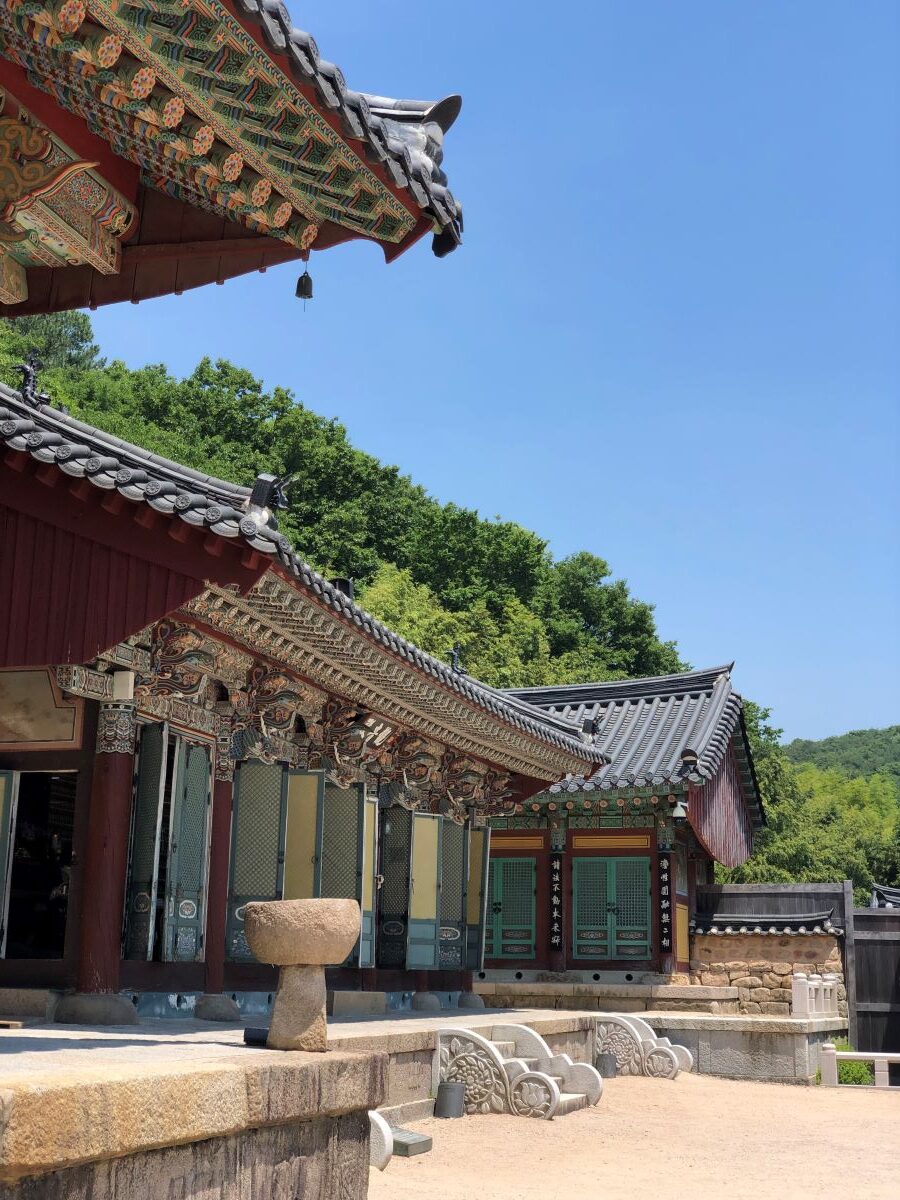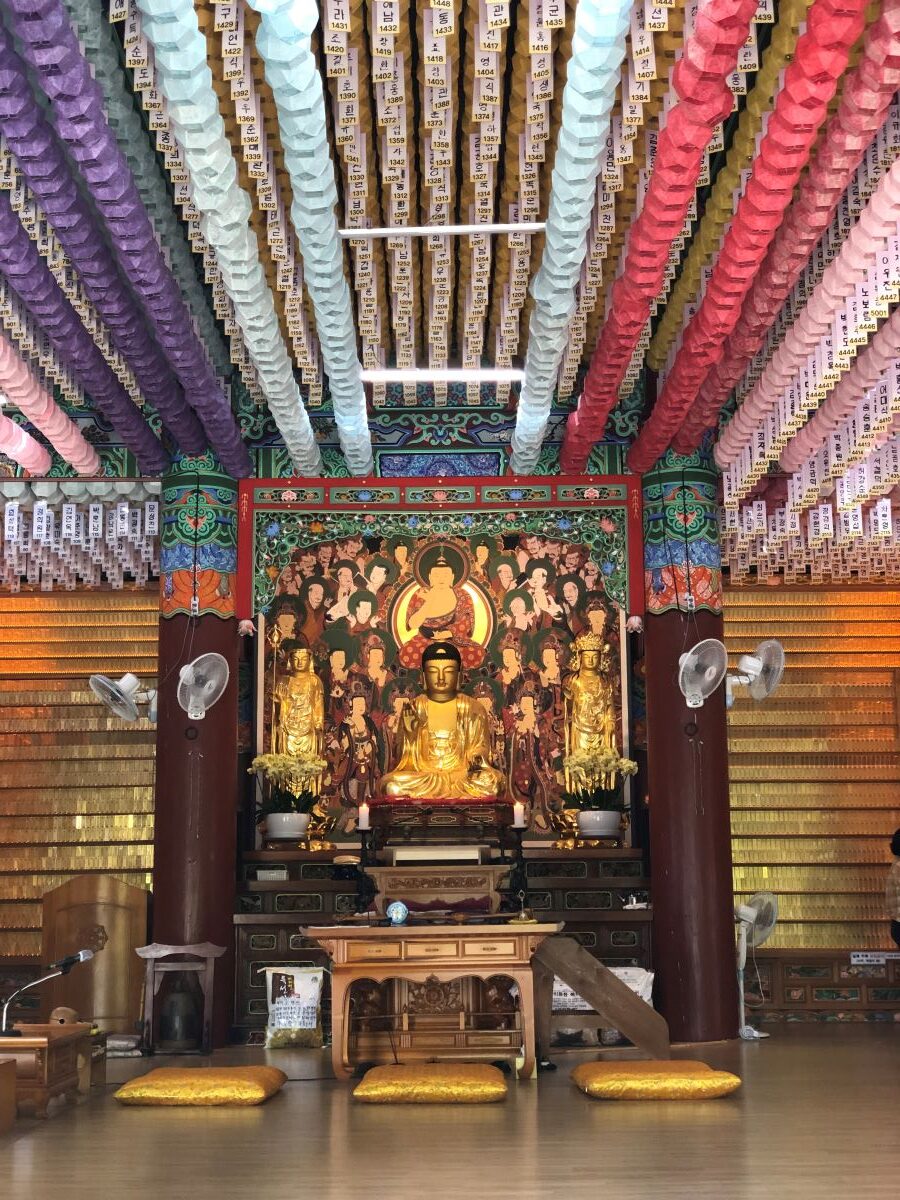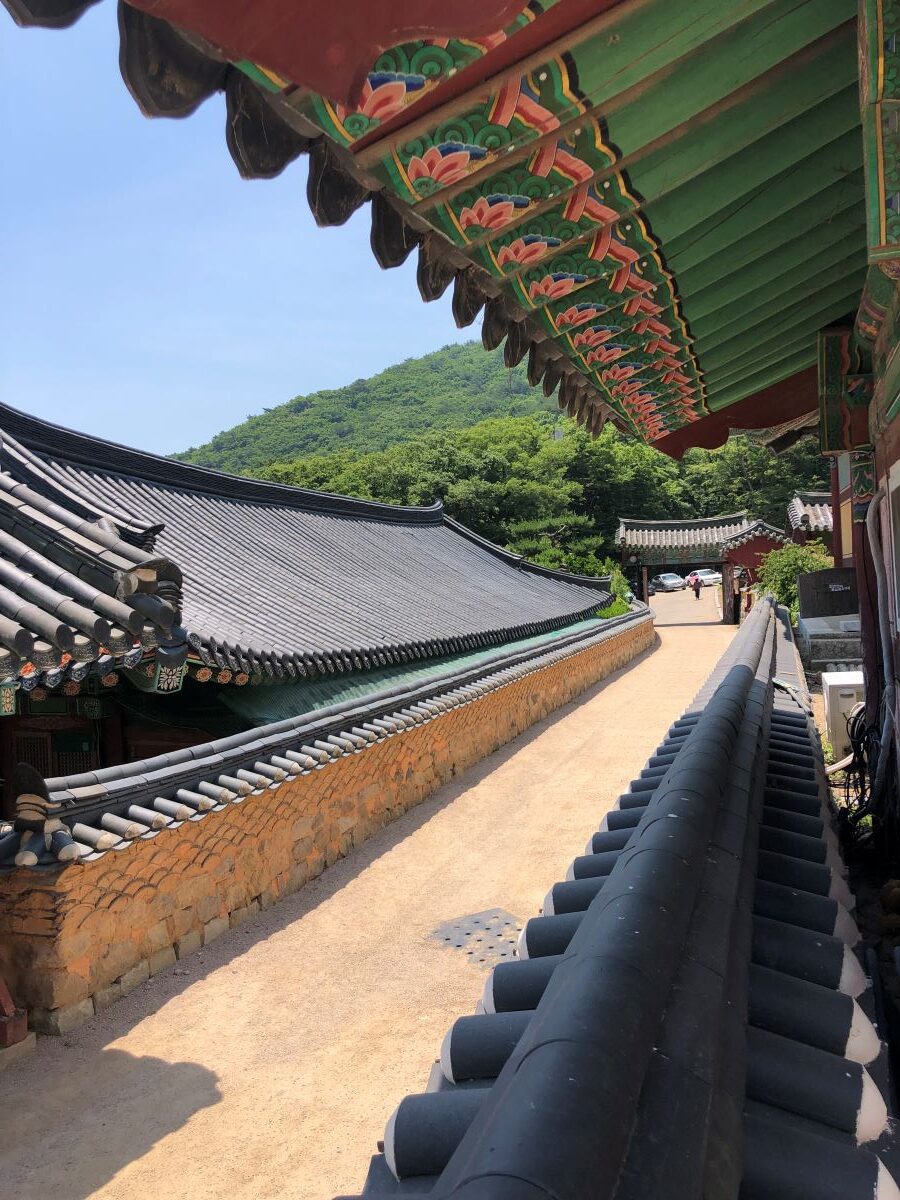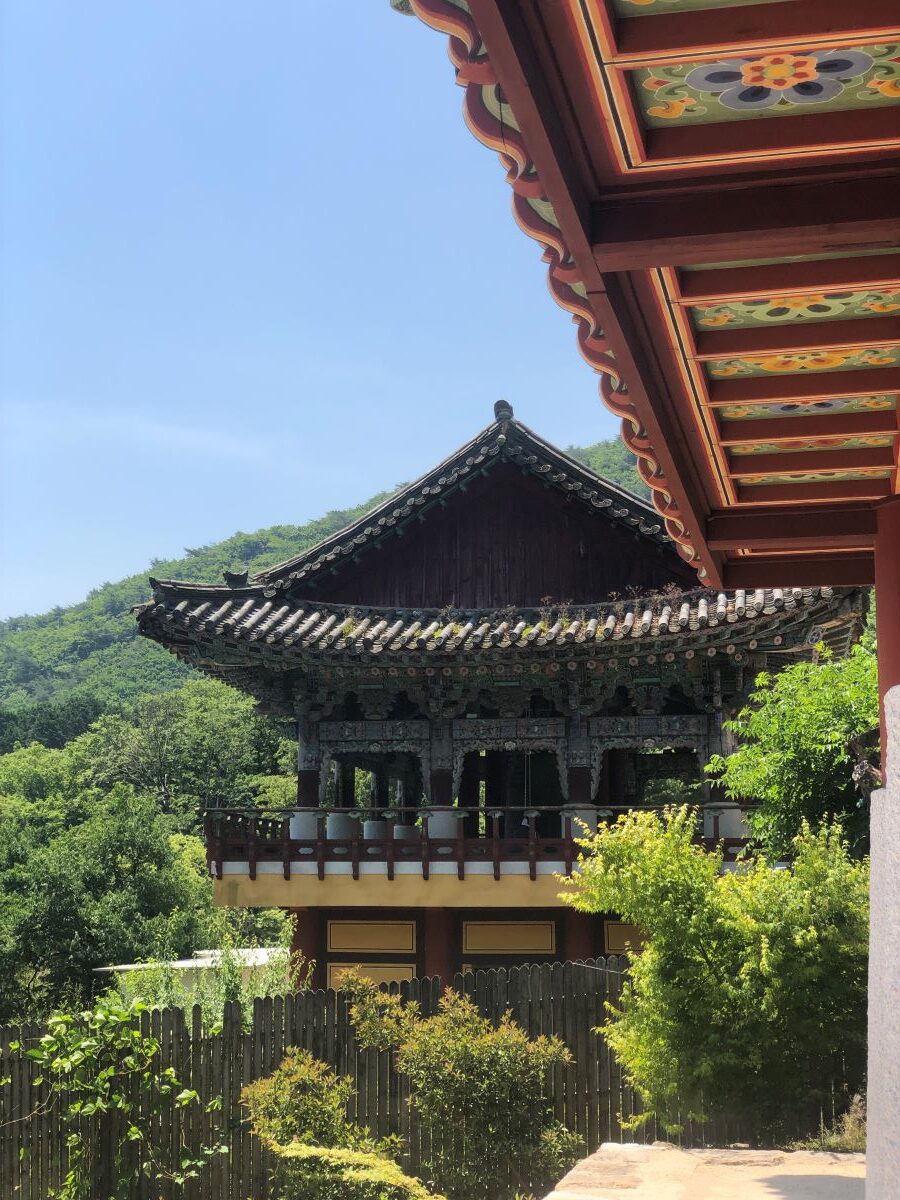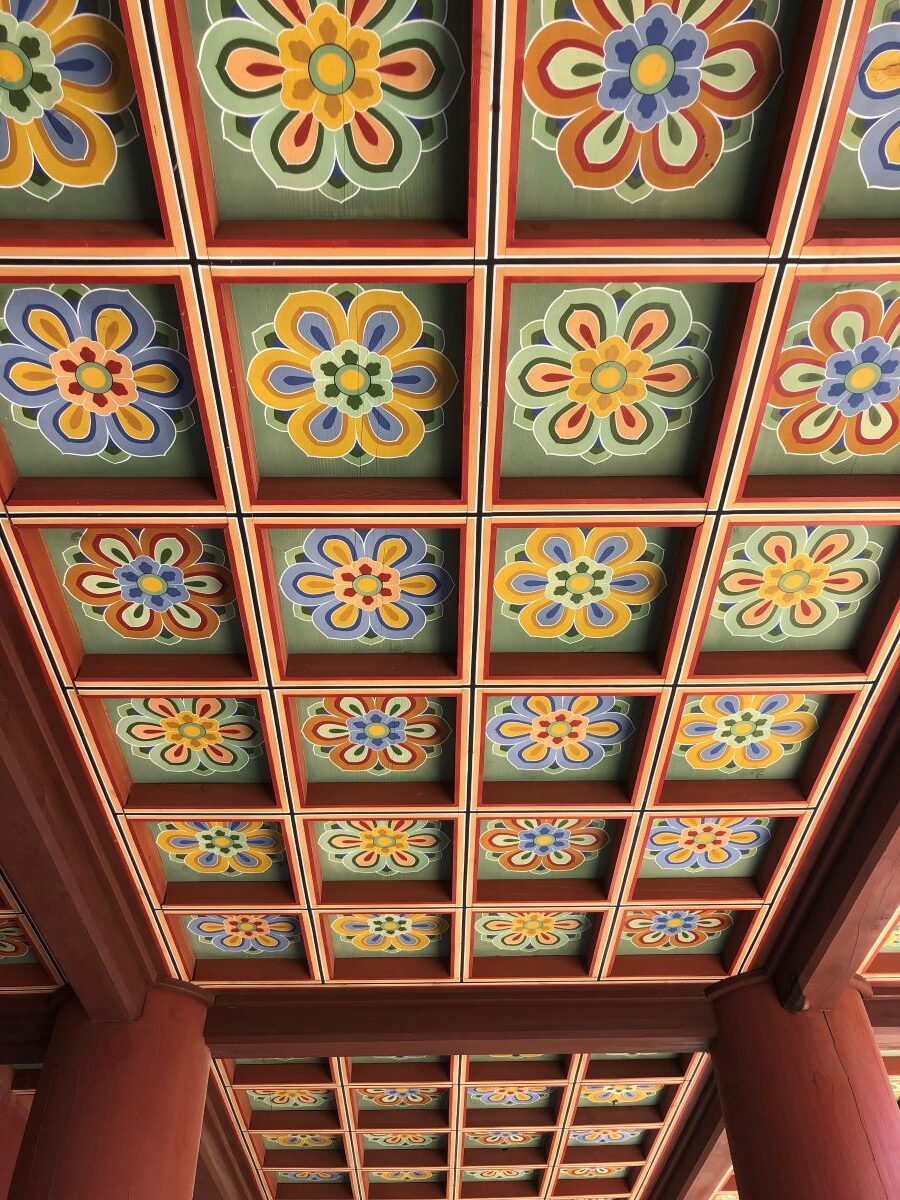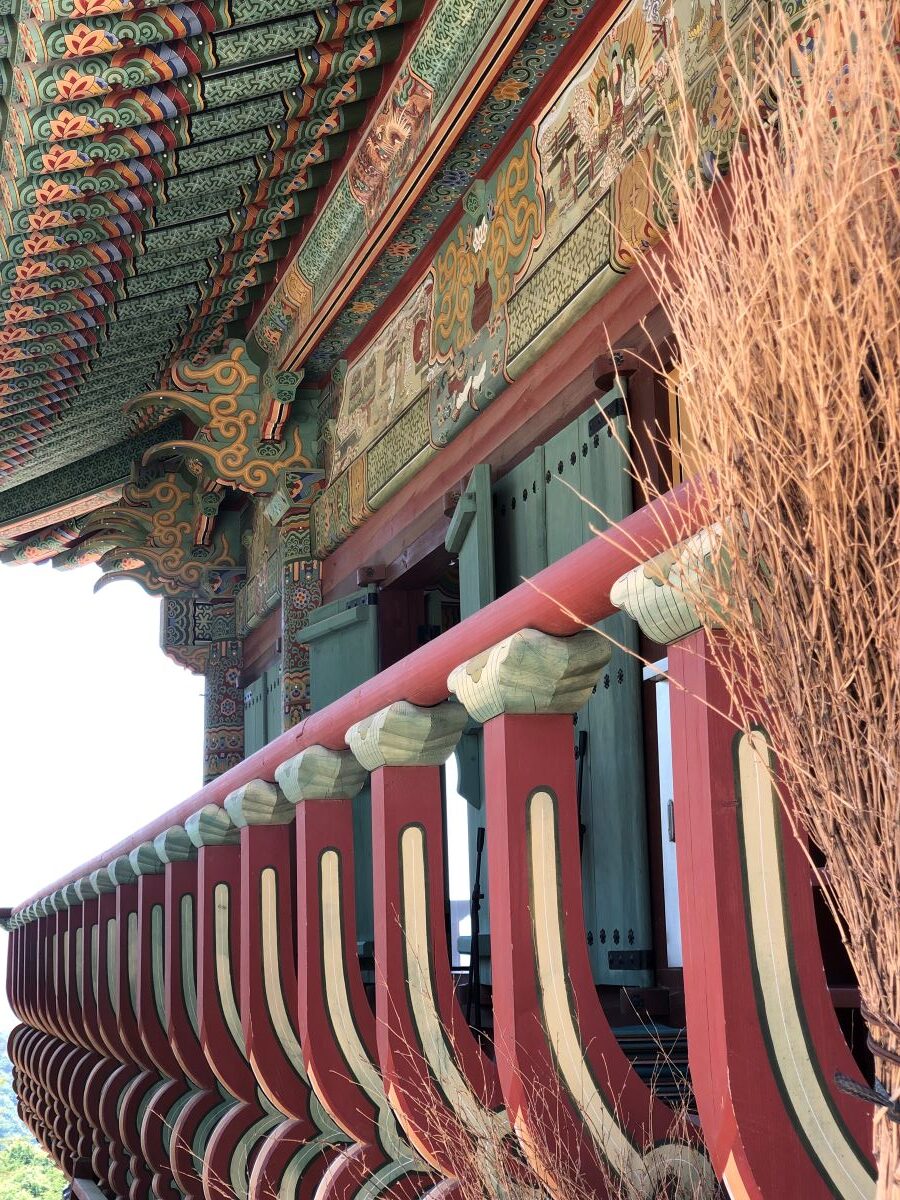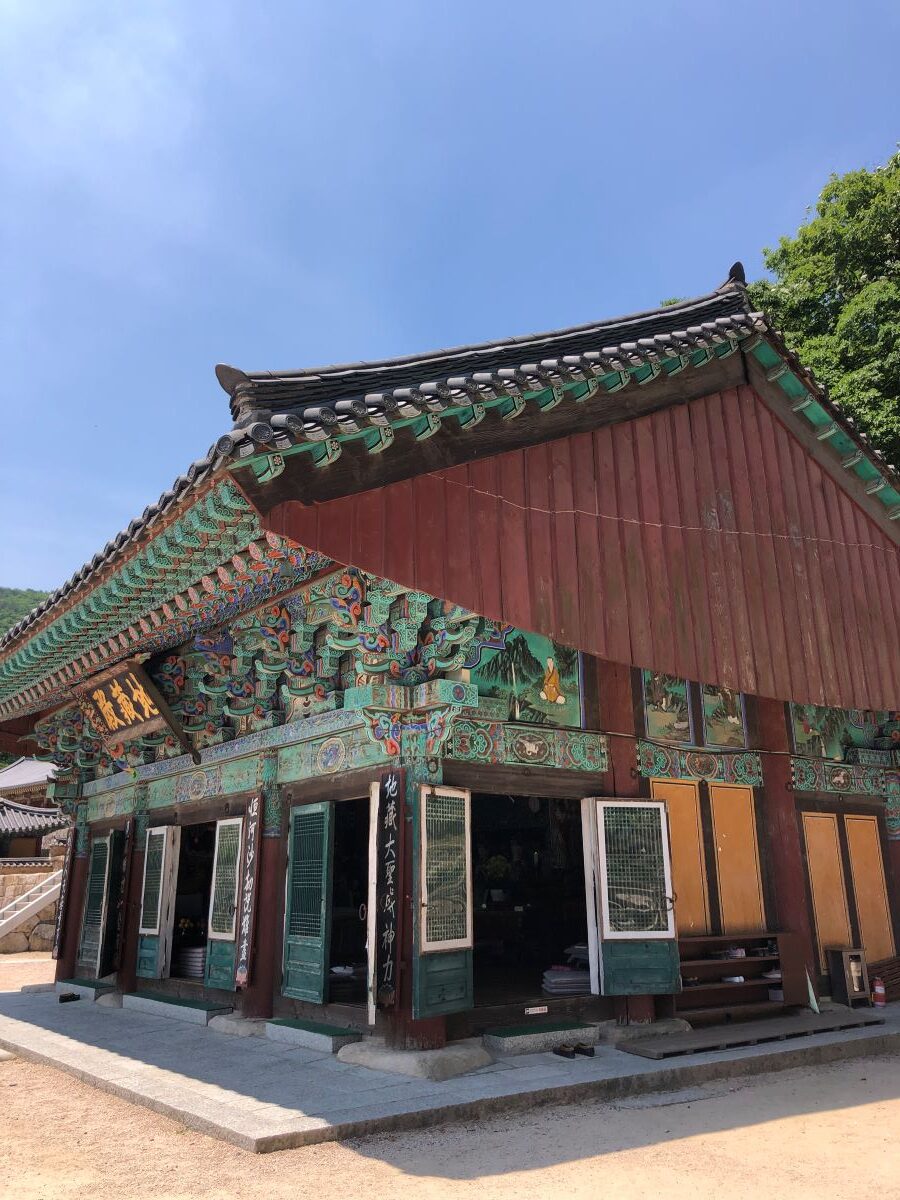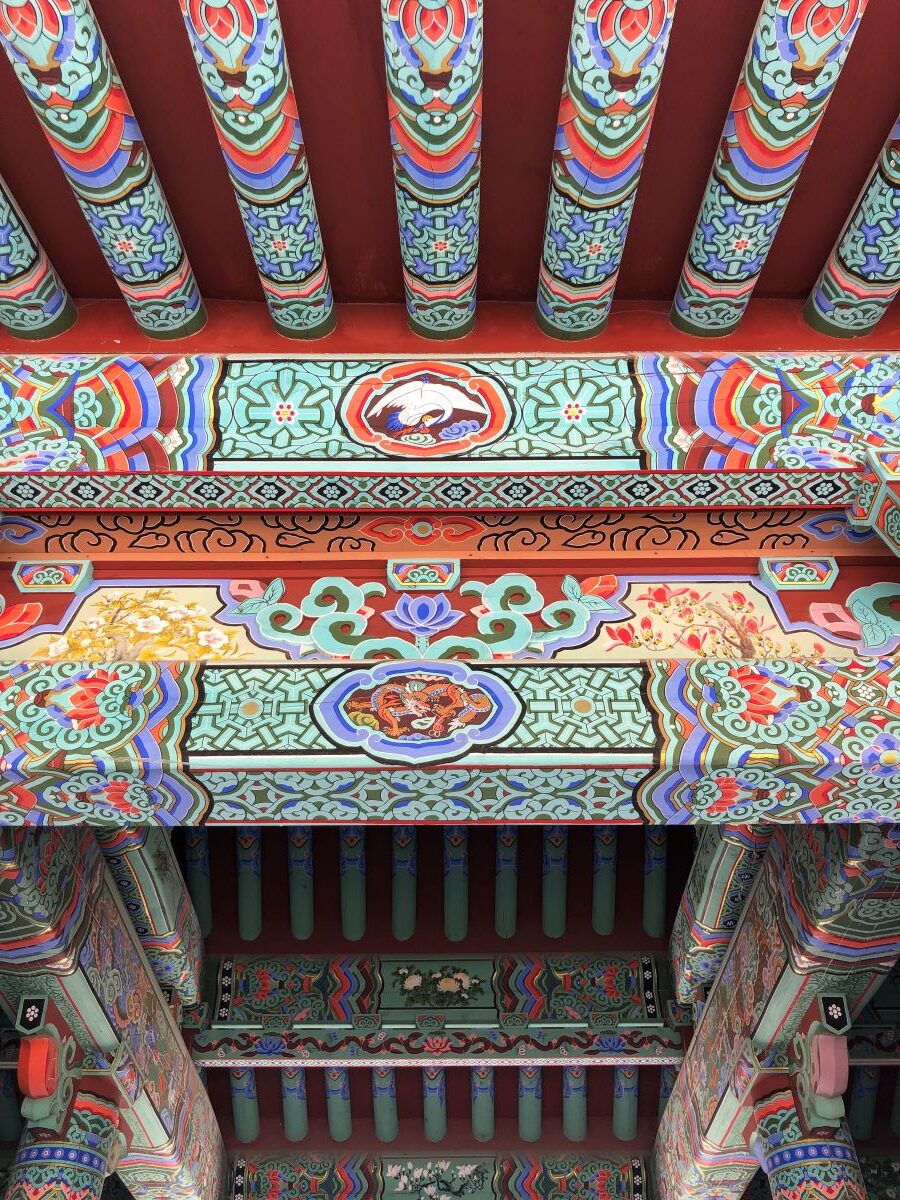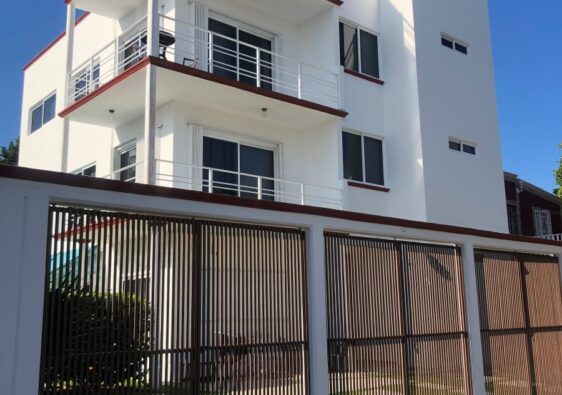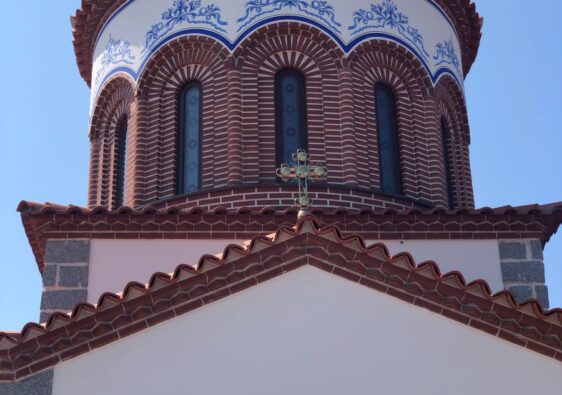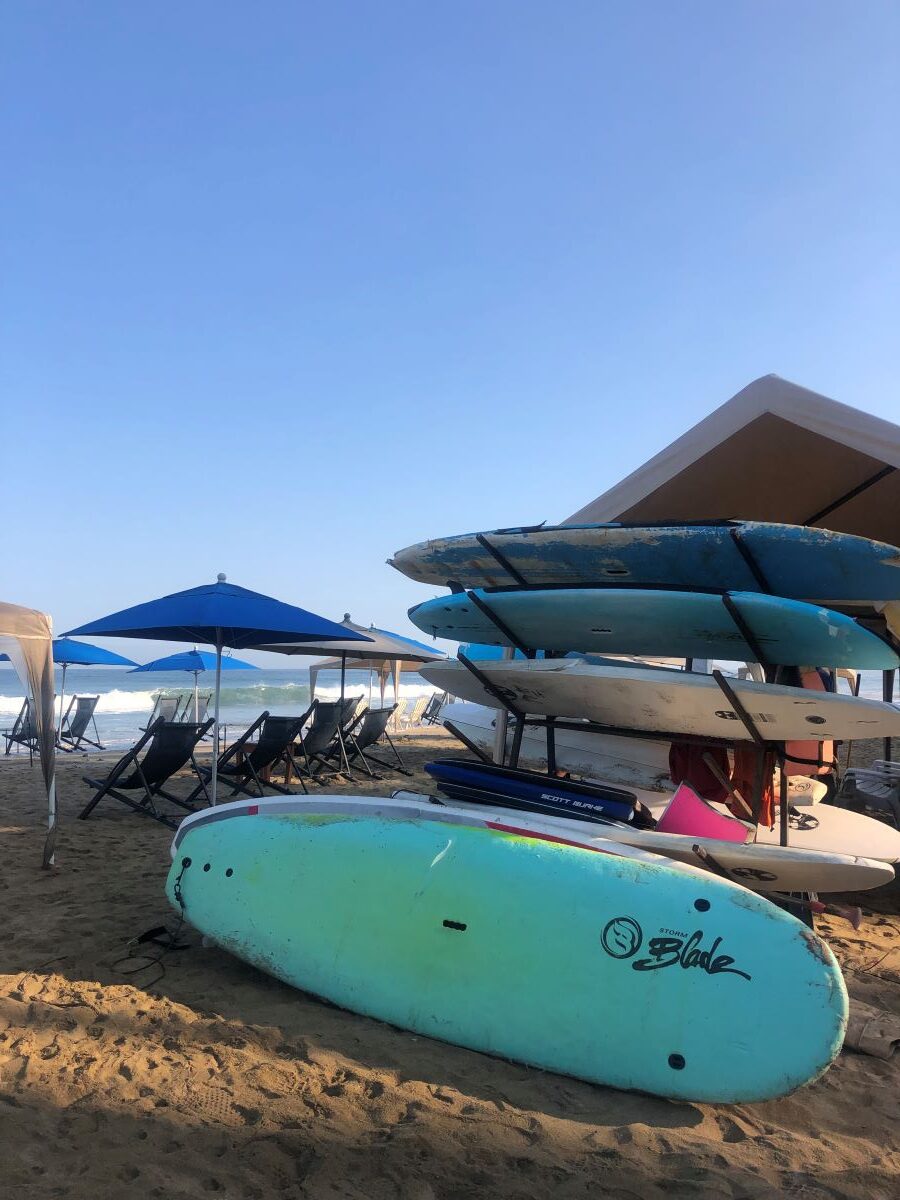An incredibly beautiful and historic place to visit just outside of the city is this temple. Founded in 678, this large complex is a fully functioning training temple and one of the most precious in this land. A national treasure, the Beomeosa Temple in Busan is definitely worth a visit.
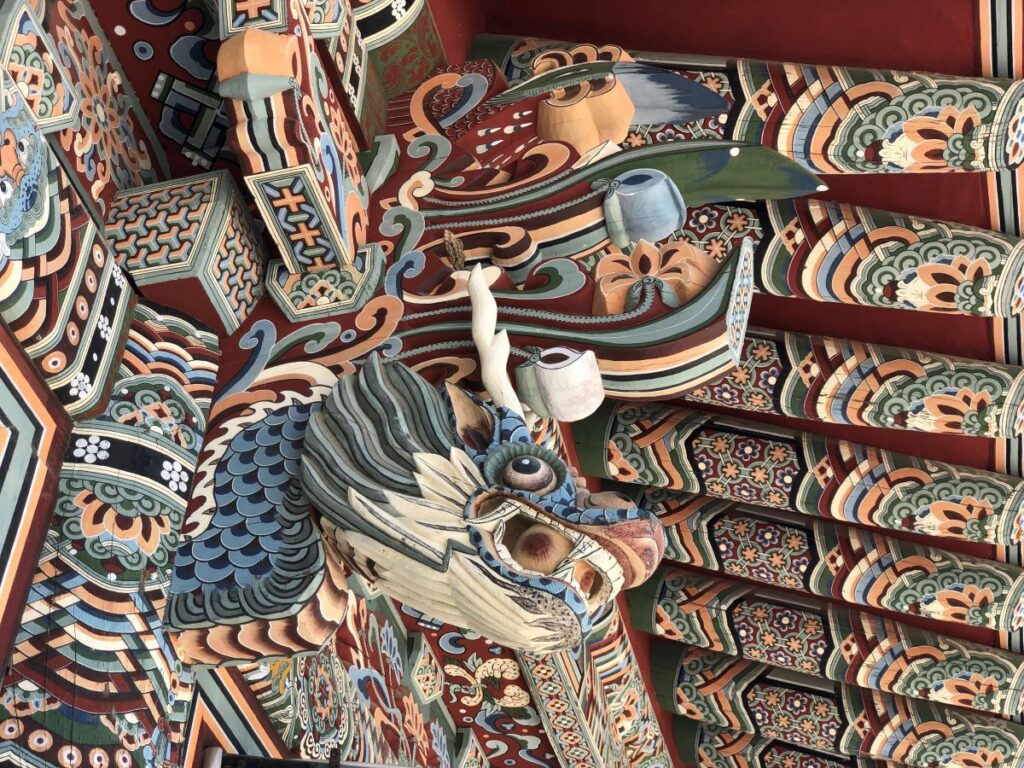
Getting There
Taking the metro from anywhere in the city is quite easy. There are only 5 lines. For this adventure, you will need line number 1 and will exit at the Beom-Eosa station. From here, walk one minute to the grocery store, and catch the #90 bus to take you up the hill. This bus ride is going to take about 15 minutes. Once you have arrived at the last bus stop, simply exit and walk up a several flights of stairs.
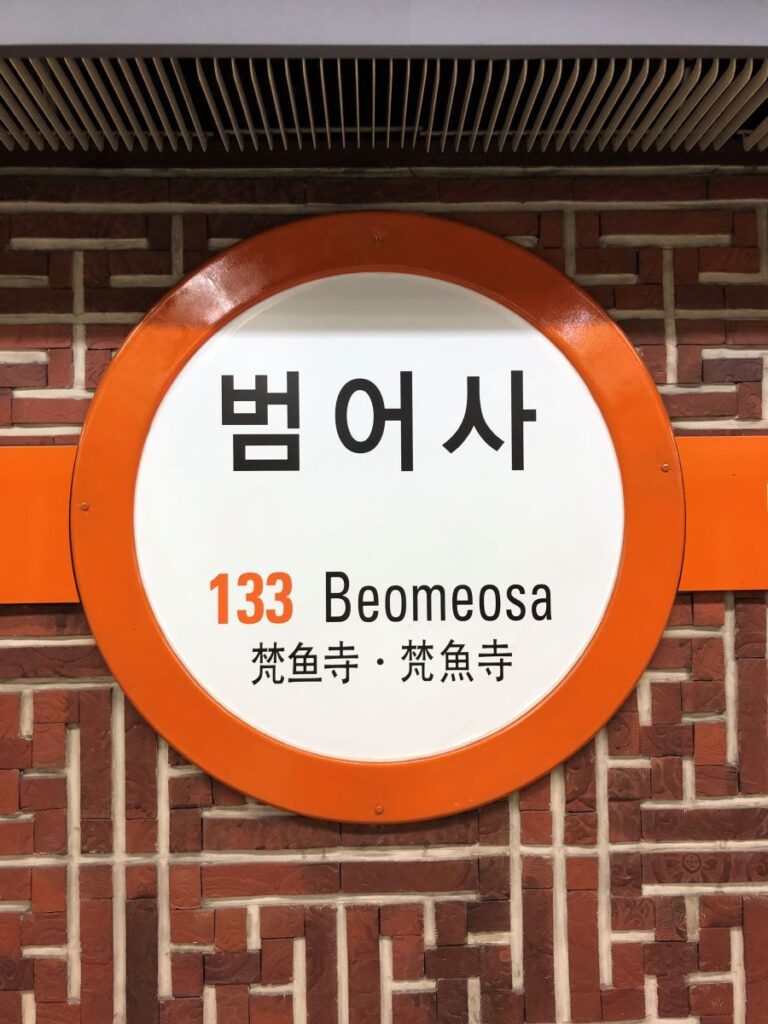
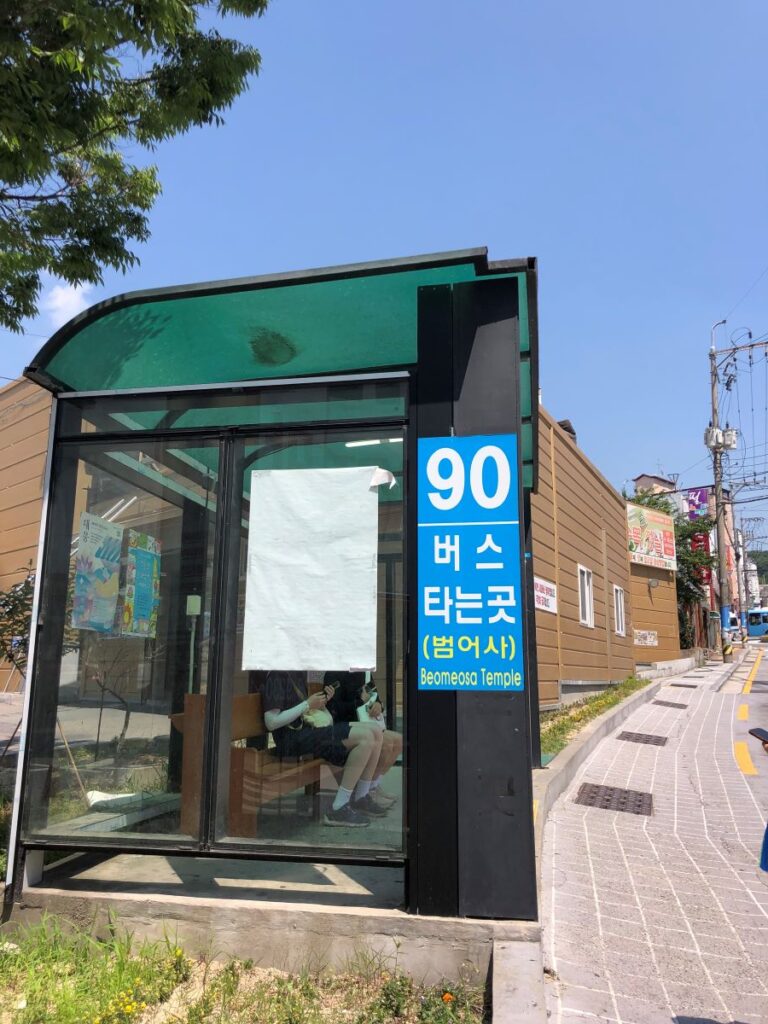
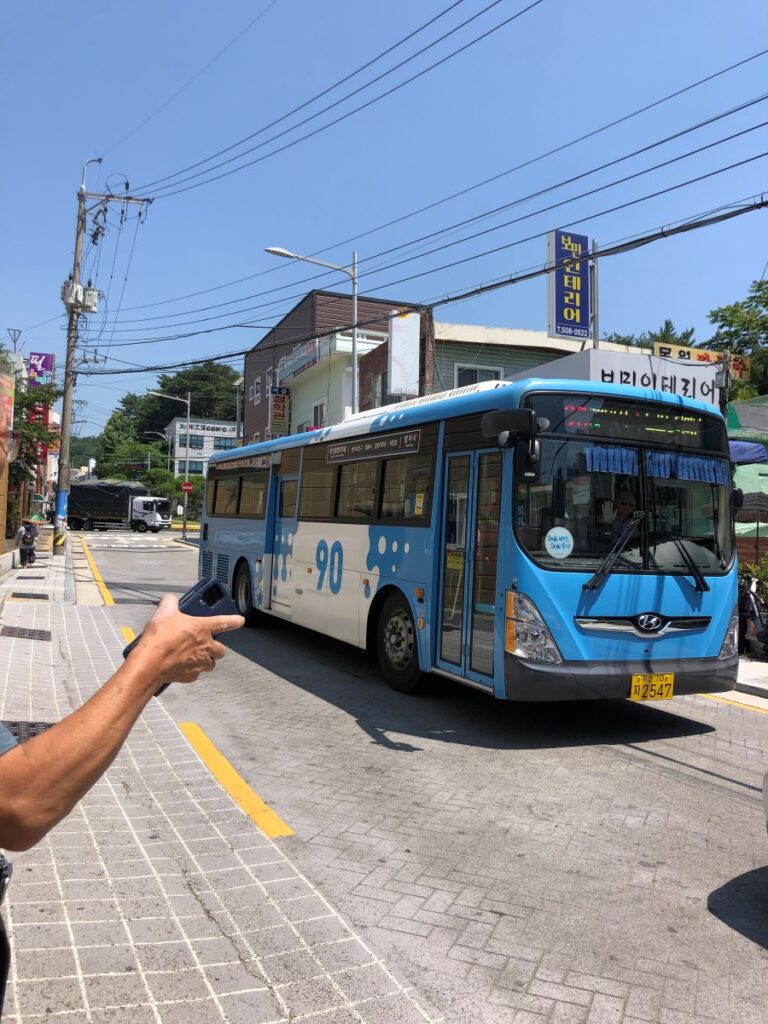
Entrance is free, this is a working temple, so expect to see monks and visitors who are here to meditate and train. In fact, Beomeosa is renown for producing some of the very best monks in the country. Signs will clearly let you know where you can visit and what is off limits.
The Complex
This Buddhist temple is vast. Sitting on the eastern side of a sacred mountain, there are many buildings and areas to explore. During the Japanese occupation in the late 16th century, most of the temple was burned to the ground.
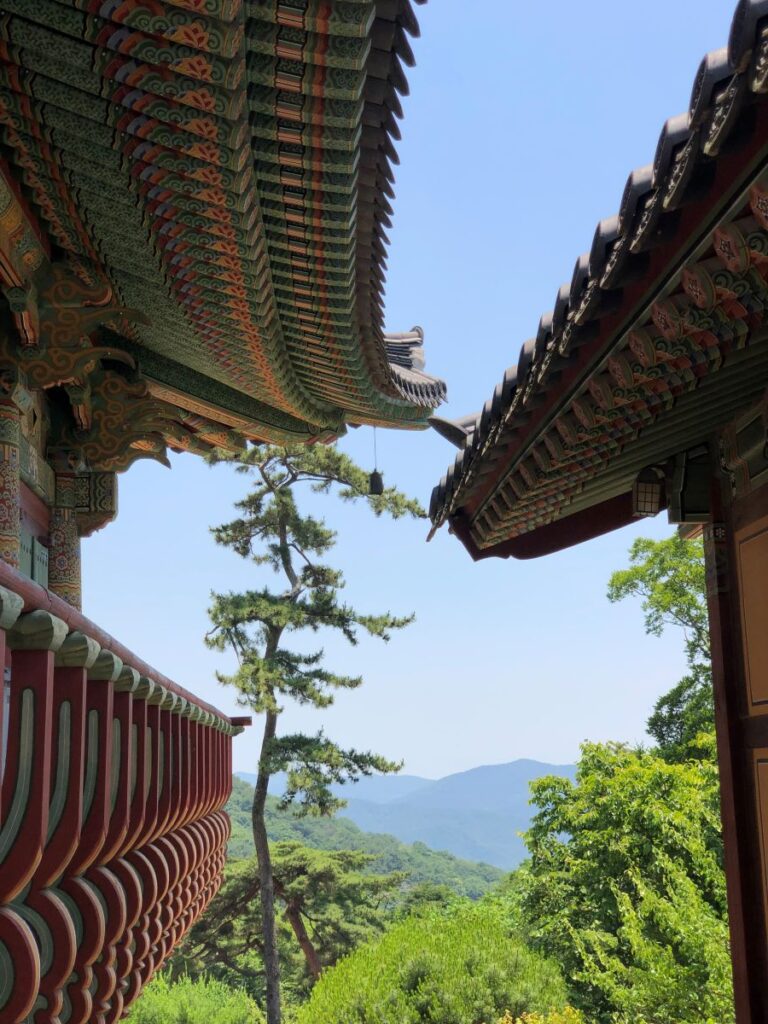

Buildings seen today were rebuilt as early as 1614 and some of the stone foundational pieces, a lantern and pagoda date back to the 9th century.
The Walkway
Approaching the temple, visitors will pass through three gates. These are magnificent and each has a valuable place within the complex. All are joined by a wide walkway flanked by shade trees.
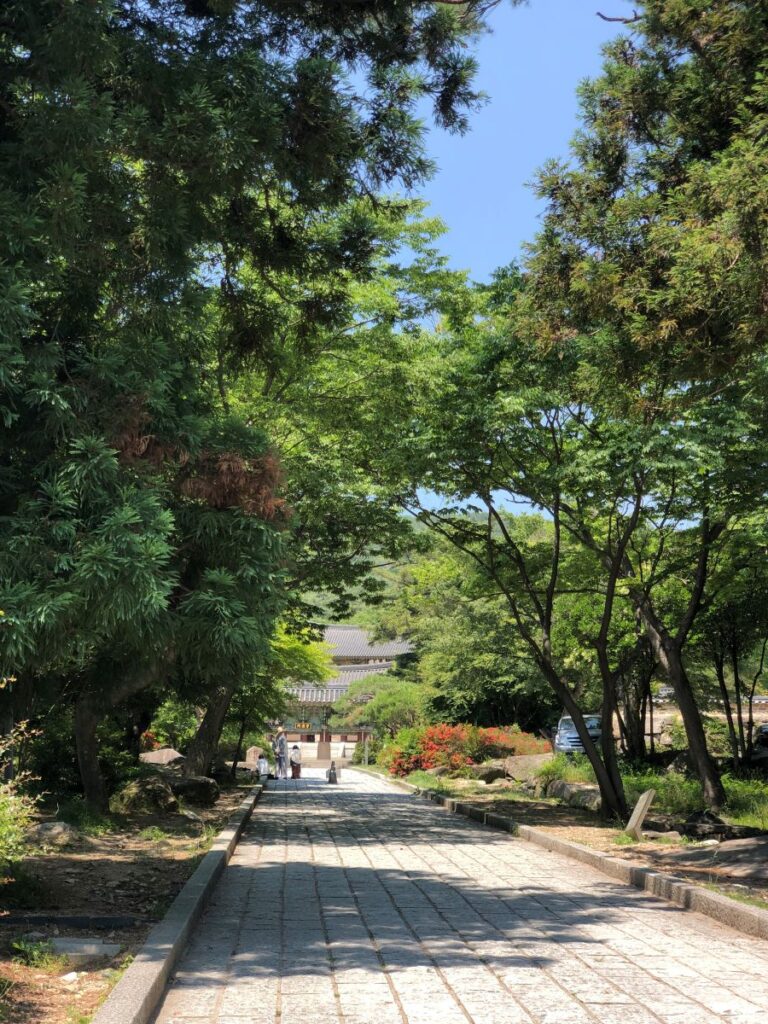
Jogyemun Gate
The first structure I saw was the Jogyemun gate, famous for its four pillars that when viewed from the side, seem to be only one. This is an important illusion for Buddhists and represents the first step towards enlightenment. Jogyemun gate is one of the oldest structures and was built in 1614.
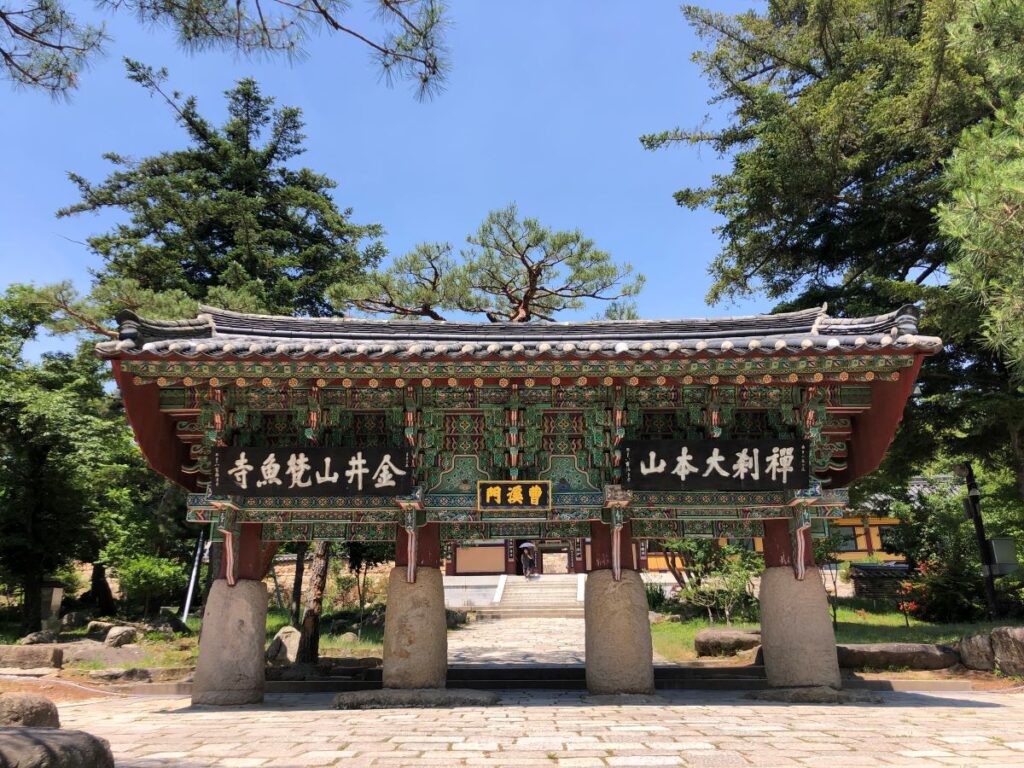
Cheongwangmun Gate
The second gate visitors will pass through, is this one. Inside are four huge figures, these are the guardians that protect the Buddha. Have a look at these massive beings and tell me they don’t ward off evil spirits. How magnificent. When I witnessed locals leaving the temple, they would bow to each one of these guardians in turn.
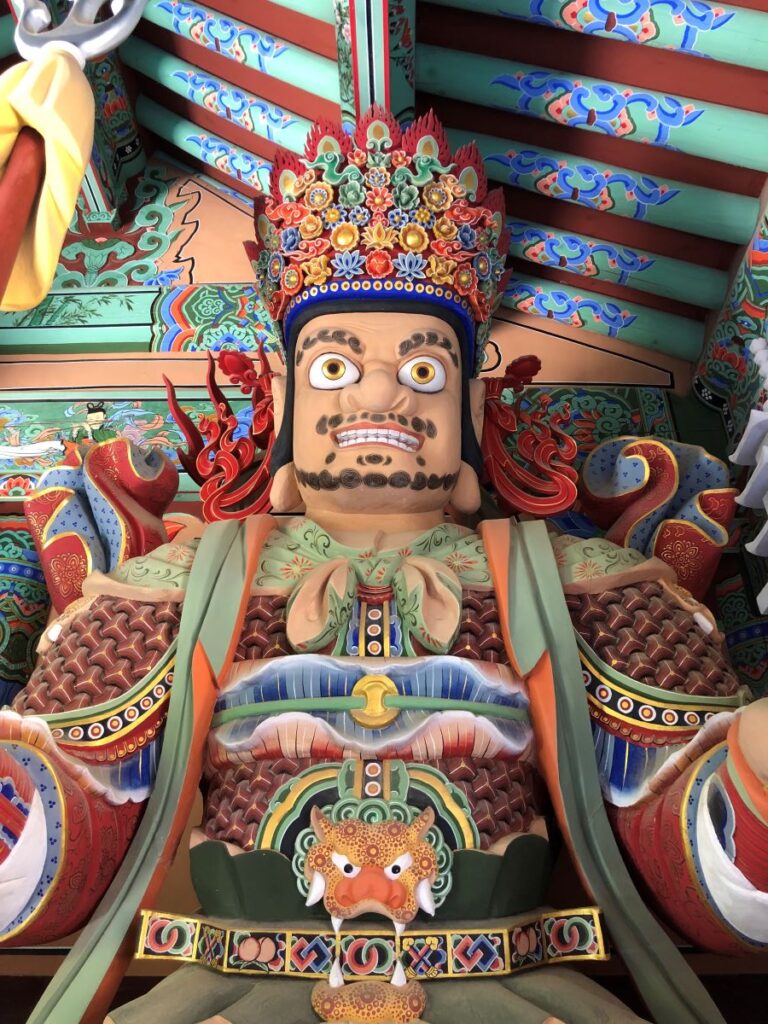
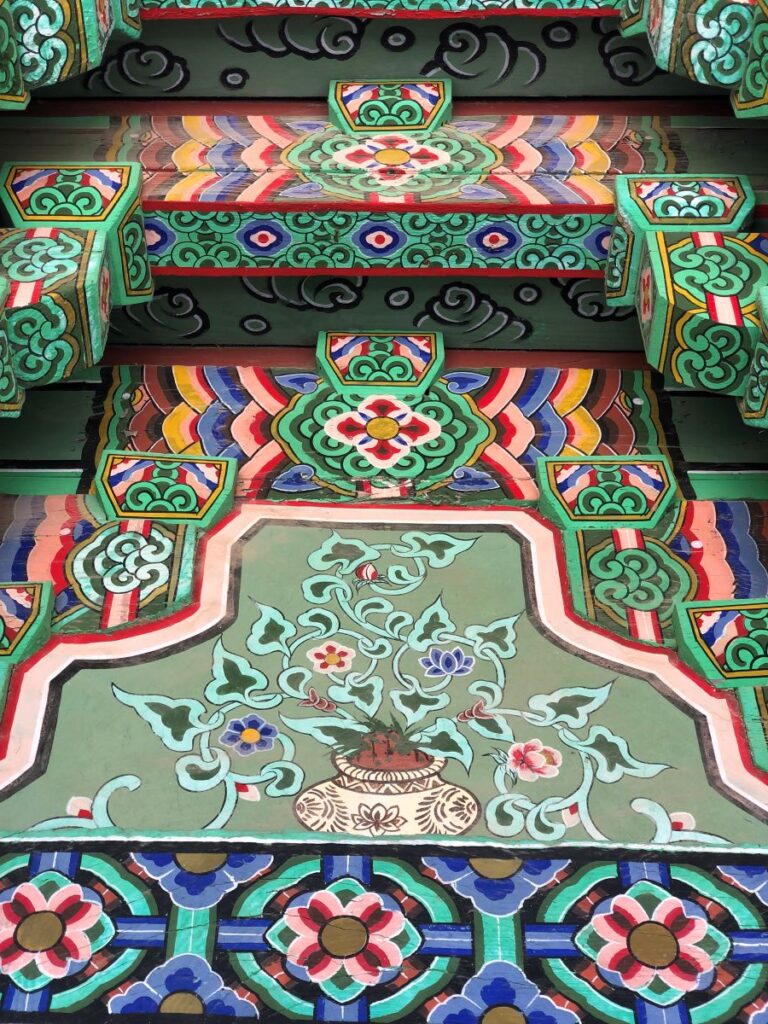
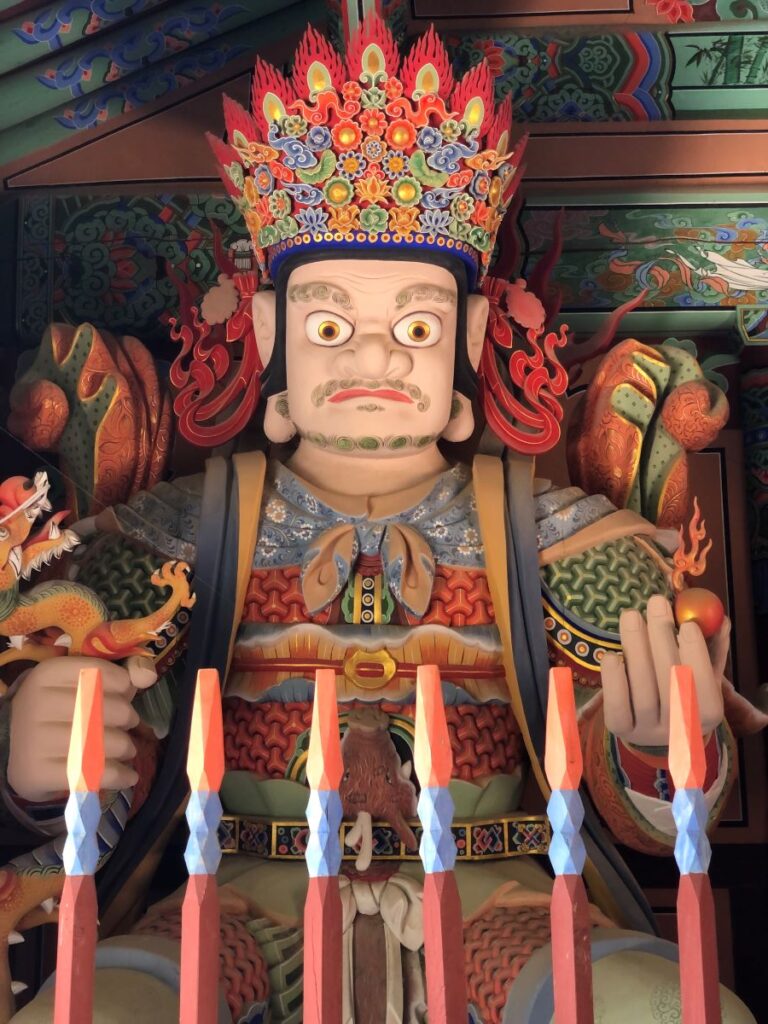
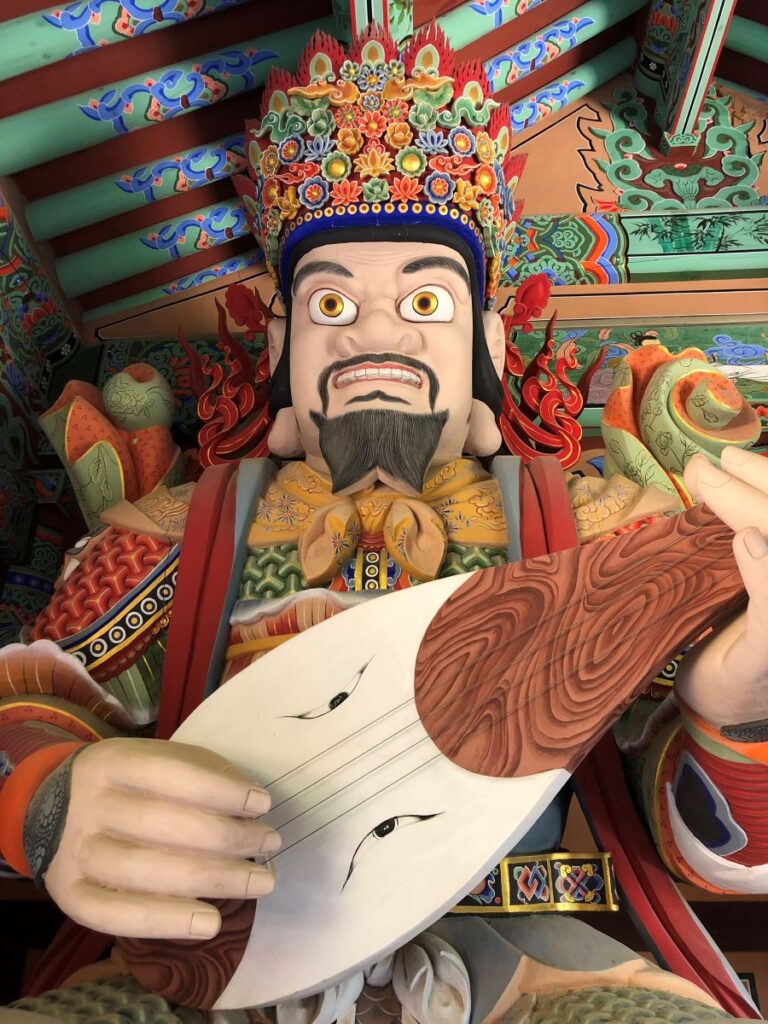
The Courtyard
Continue walking the path and climb yet another staircase. Here you will walk under the Bojeru Pavilion and up through a dark space, entering into the bright central courtyard.
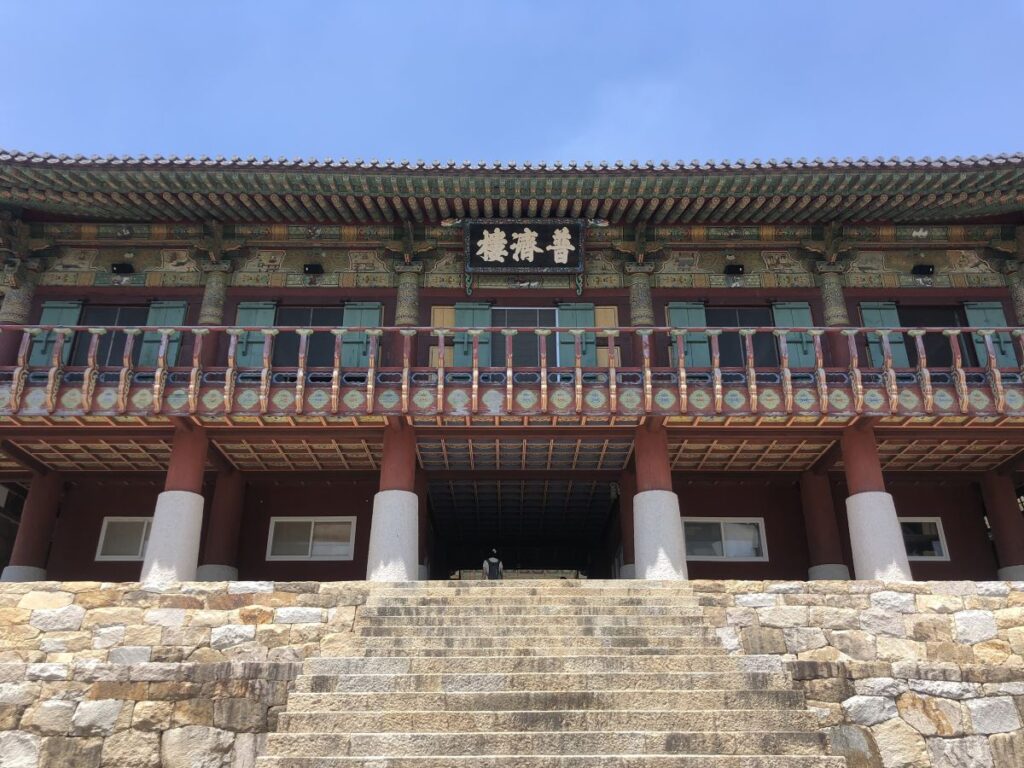
In this wide-open area, one can take a deep breath and really experience the peace and tranquility here. You might see monks going about their daily sessions and passing right by you.

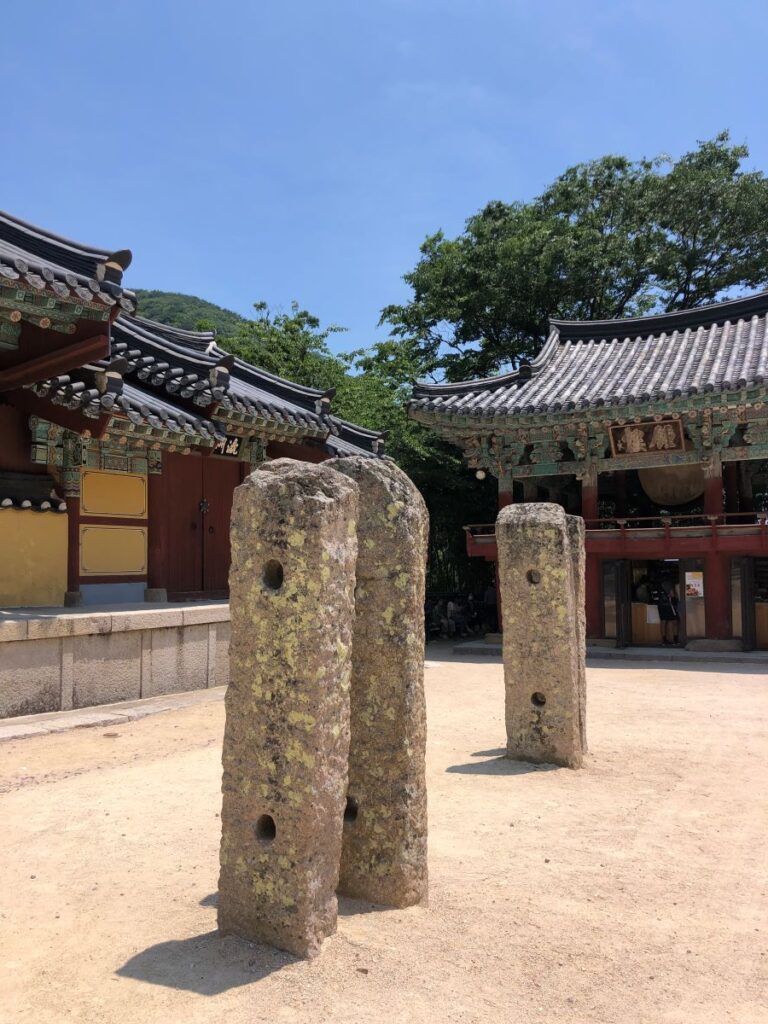

Daeungjeon Hall
The complex’s main temple, built in 1614 is directly in front of you now. Up one more set of stairs and you will see an exquisite example of temple architecture dating from the Joseon Dynasty.
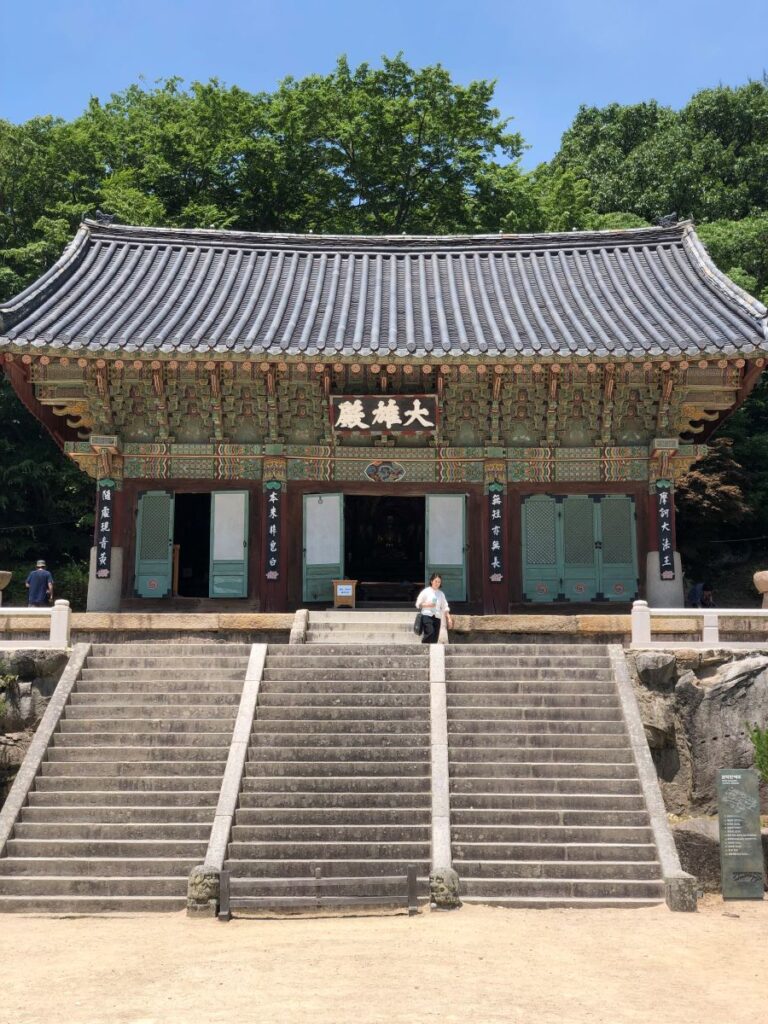
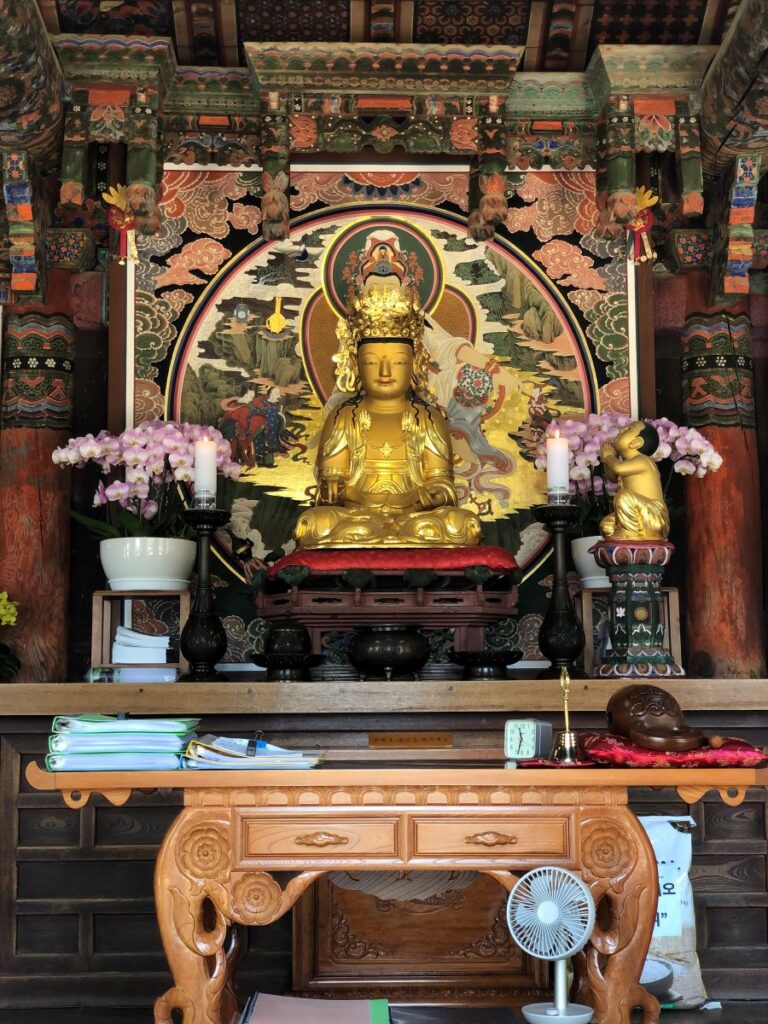
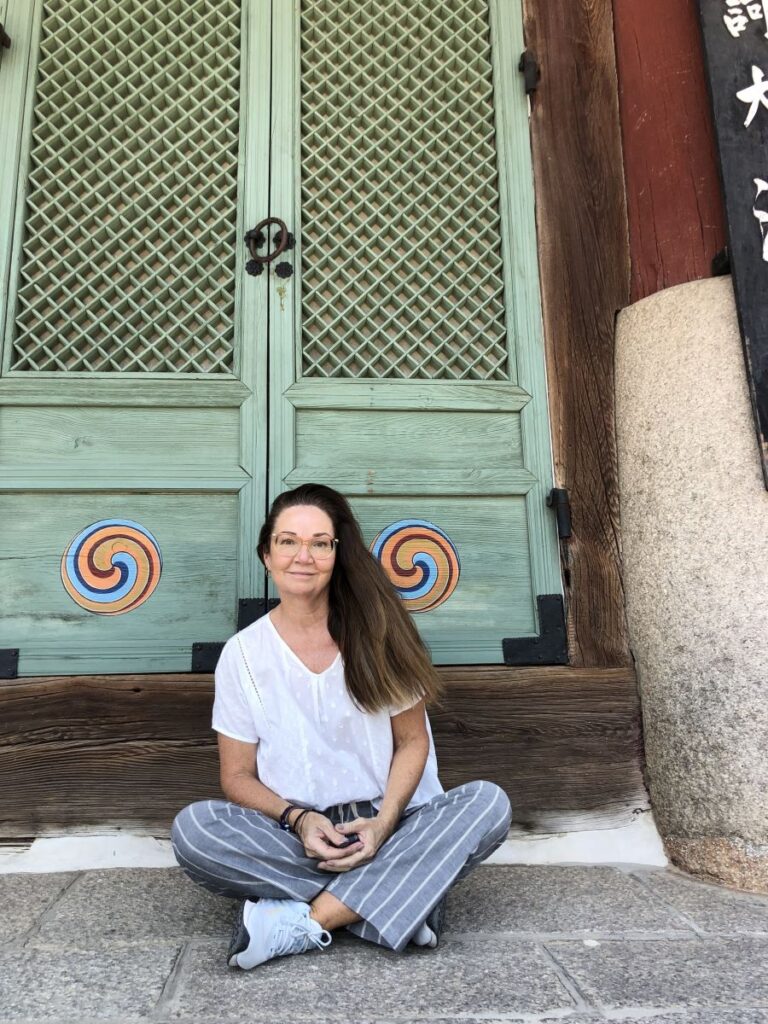
I cannot describe to you, how captivating the ornately painted décor is here. Actually, on all of these buildings, I was left in awe, as I wandered around with my neck craned looking skyward.

Not only the combination of colours, but the patterns and liveliness is amazing. Each individual beam completely hand painted into a network of pattern.
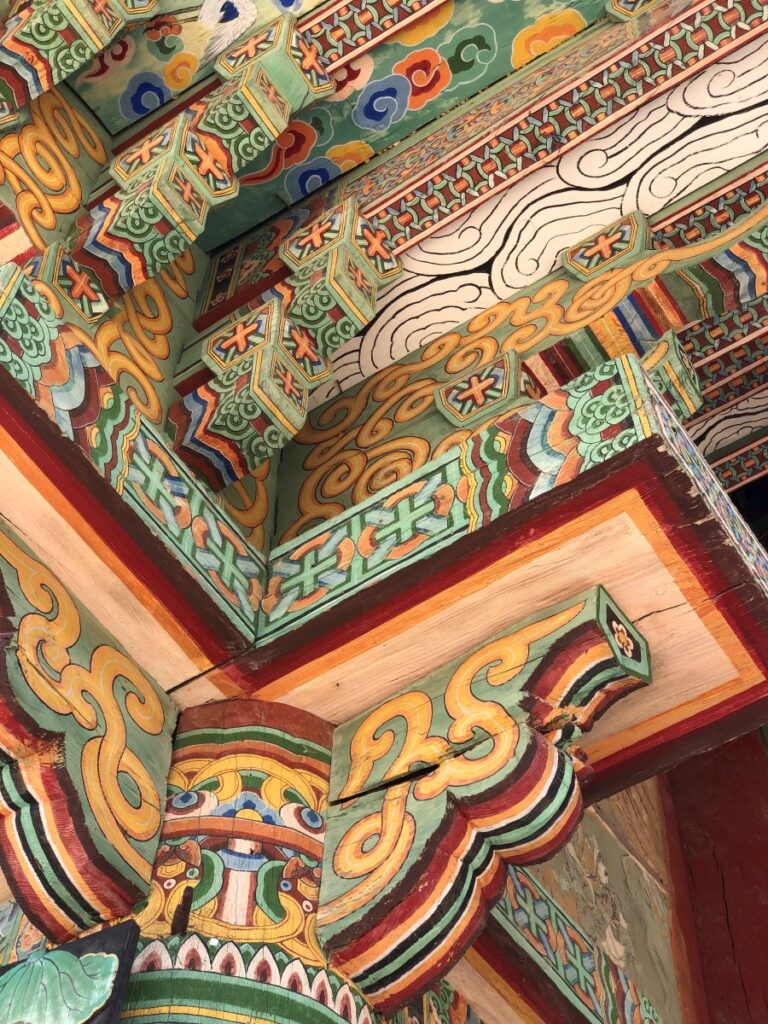
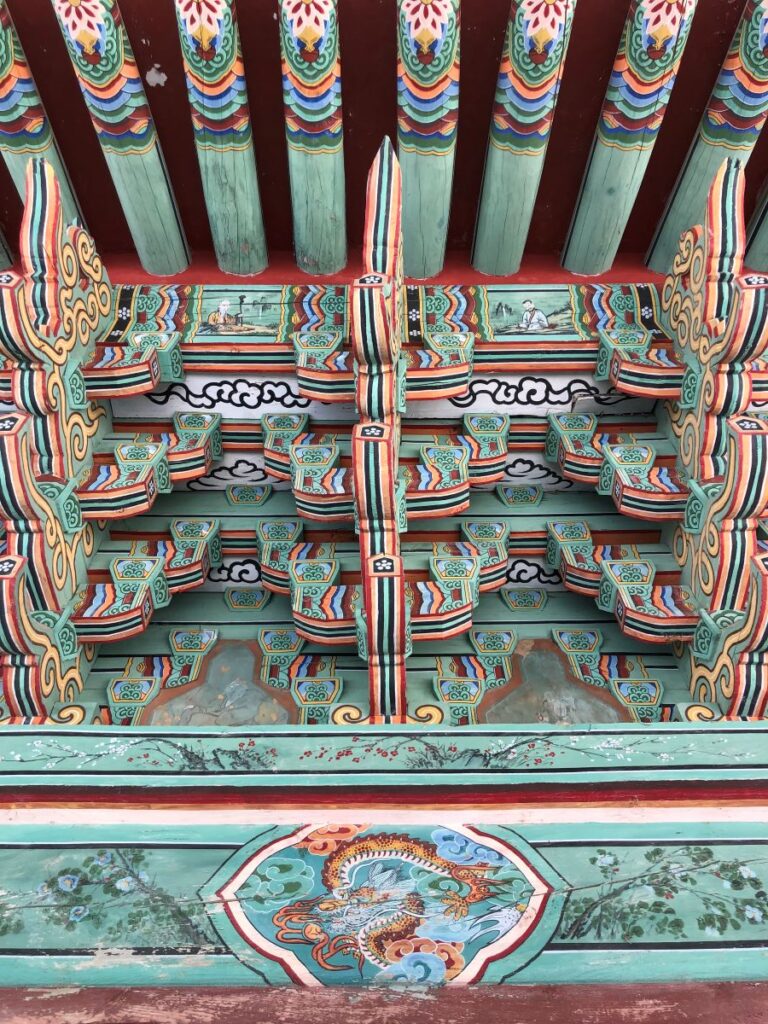
At the sides of the buildings in particular, are large individual paintings, often times of animals or pictures depicting the Buddhist travels and life.
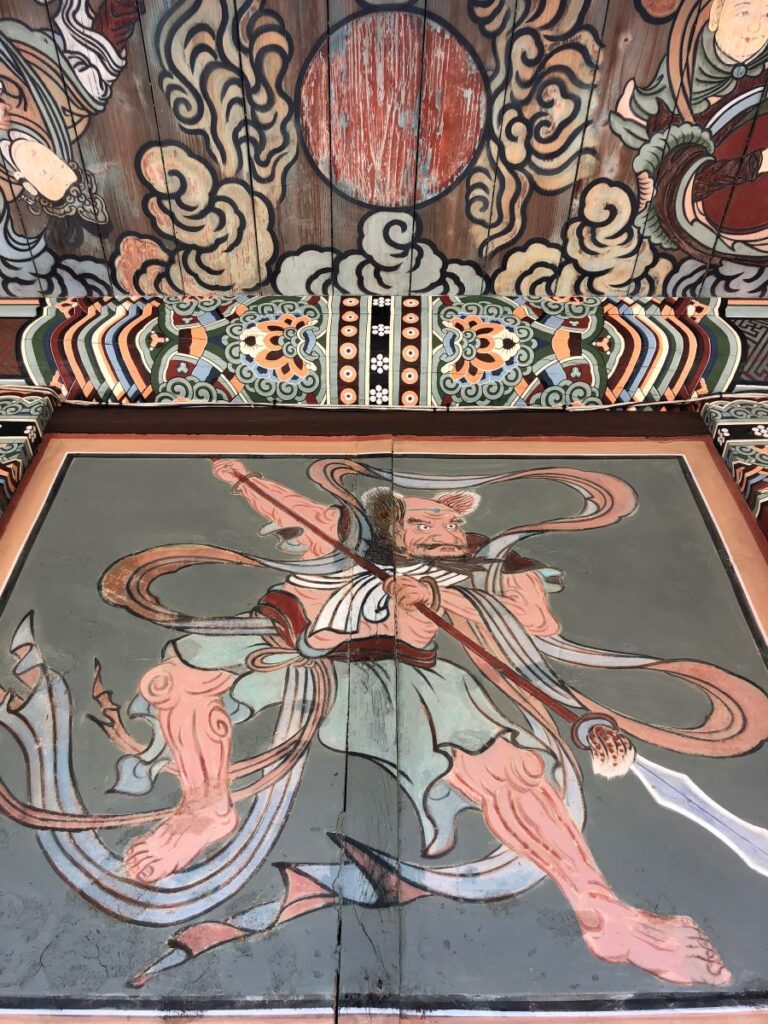
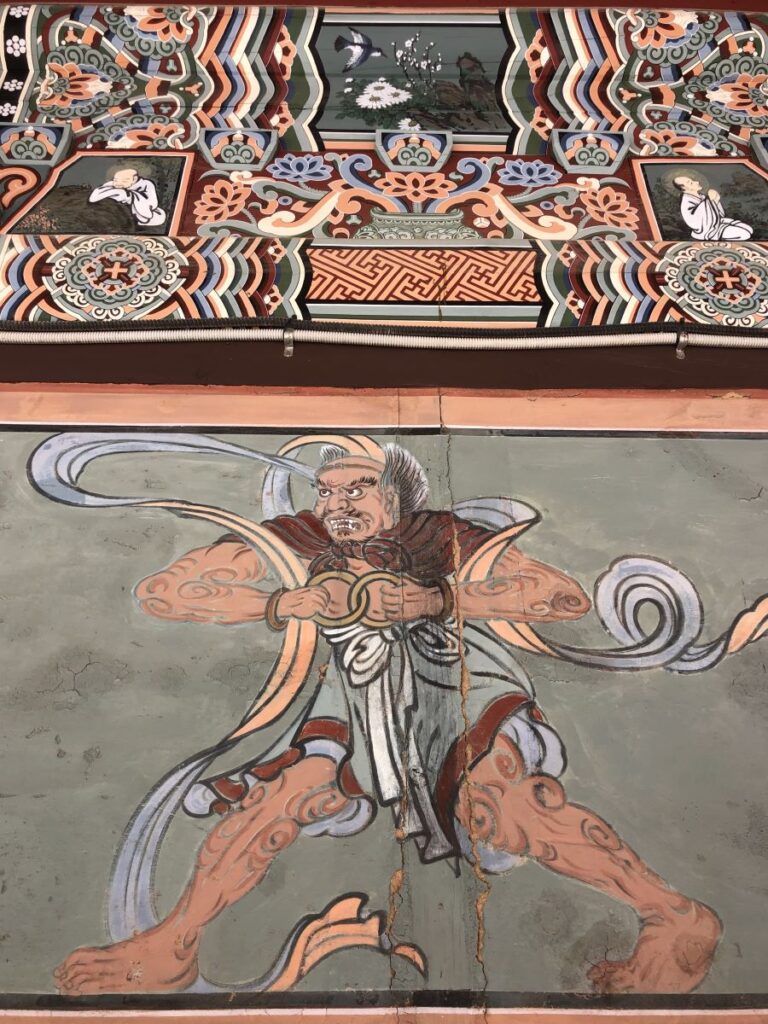
The Stone
Walking to the left of the Daeungjeon Hall is a massive stone. There are ancient carved inscriptions on here and a small sacred well at the bottom, tucked underneath.
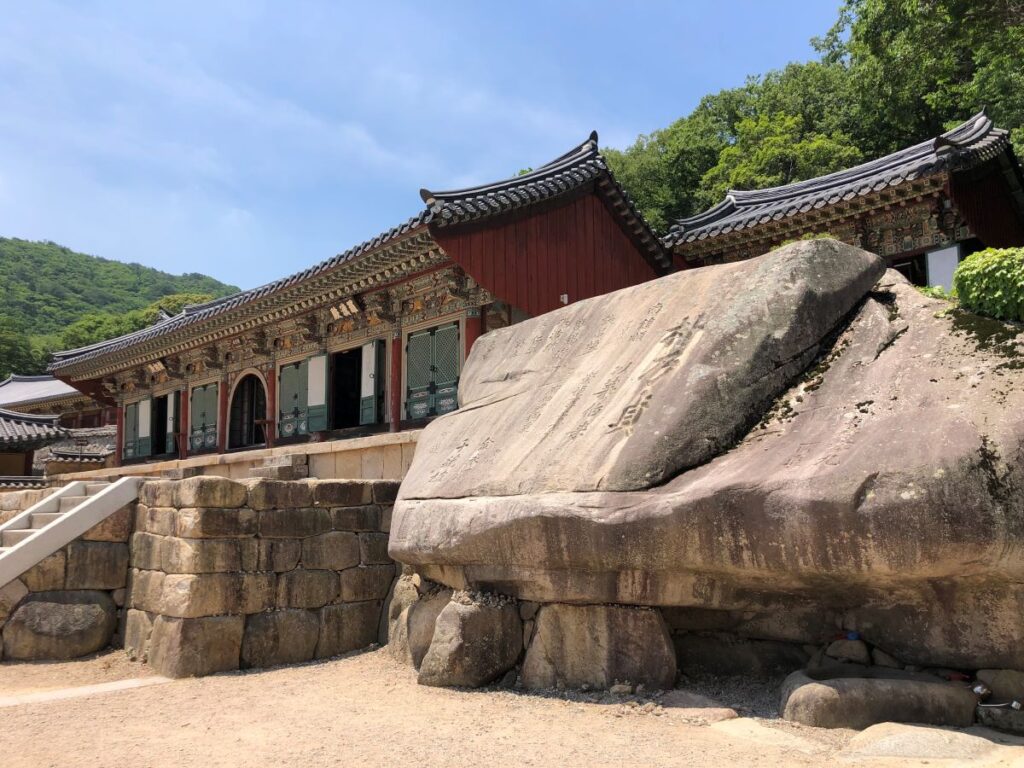
Visitors have placed coins on the vertical face of this stone, and somehow, they do not fall.
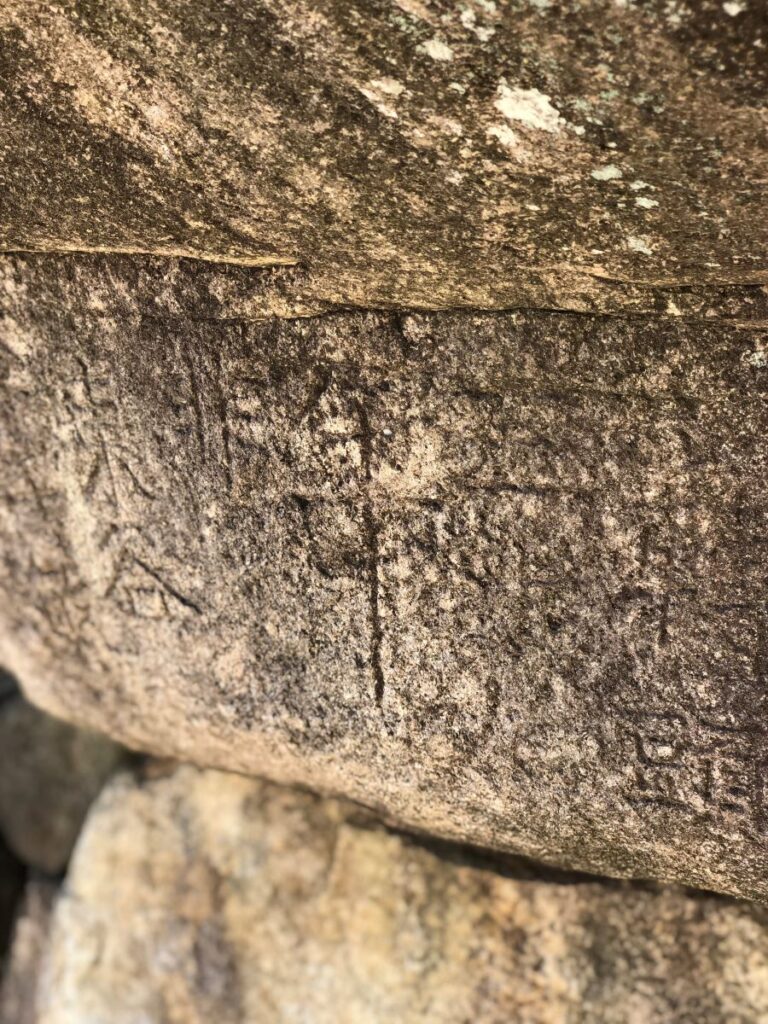
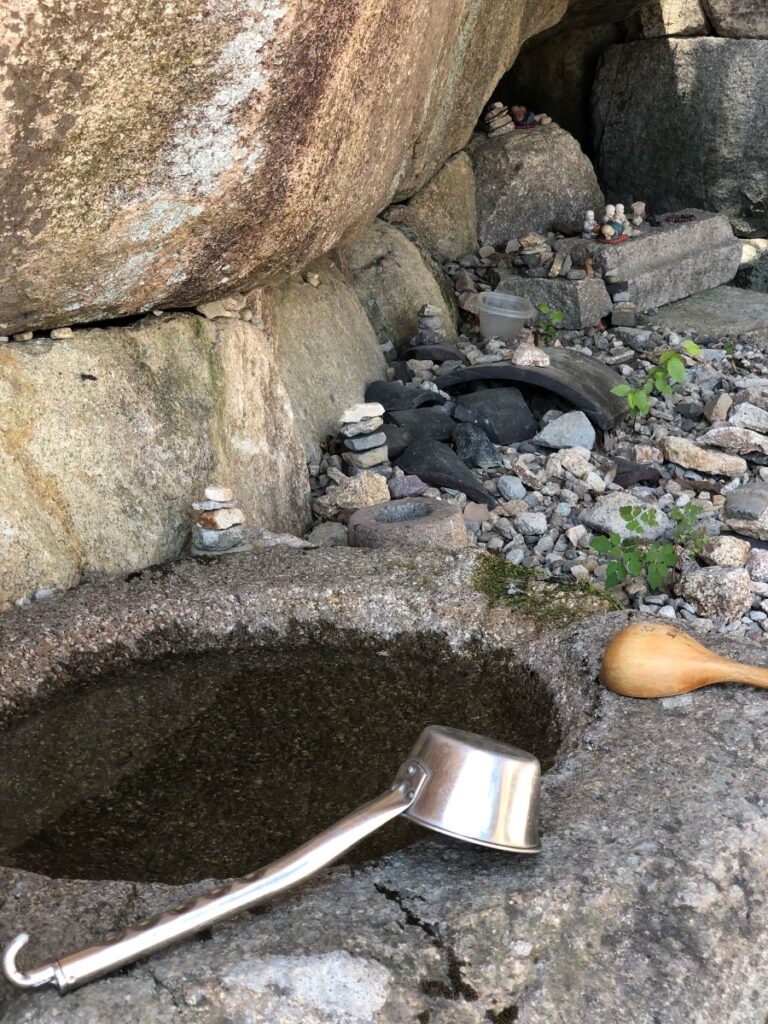
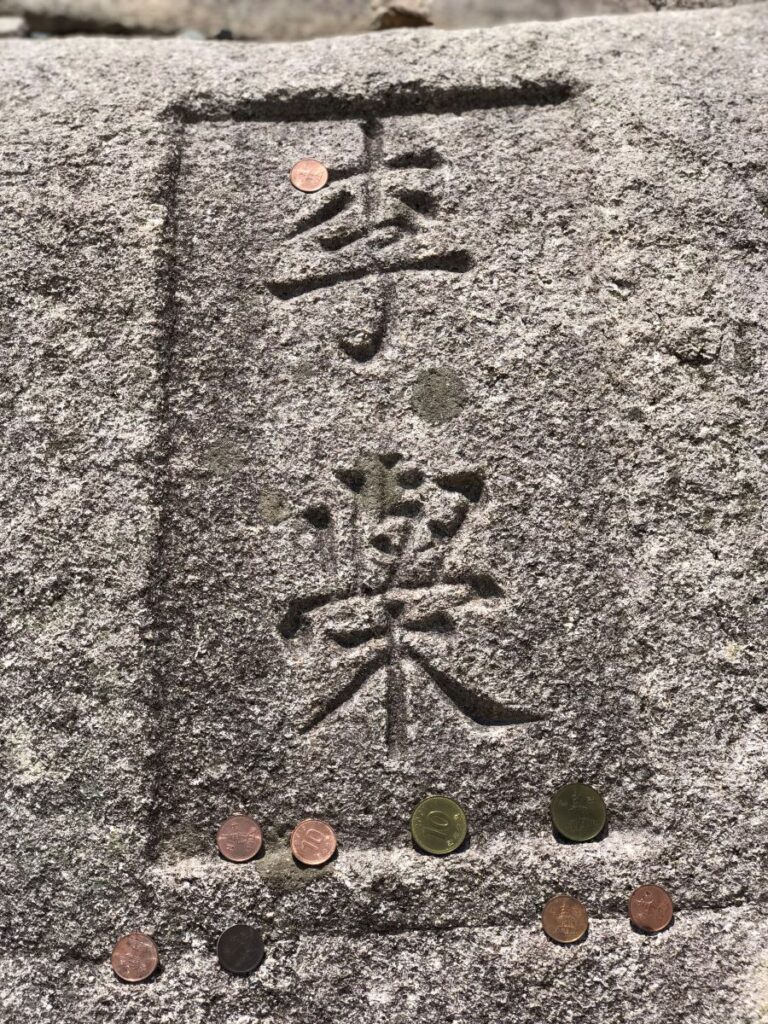
Other Buildings
Please have a wander all around. I was in absolute peace here, having a look into these beautiful buildings. Many can be entered, simply remove your shoes and walk up the few stairs.
There is a gift shop of sorts on site, with many beautiful items for prayer and remembrance. I was able to purchase a bottle of water from the lovely lady who was working that day. It can be very hot, especially mid summer.
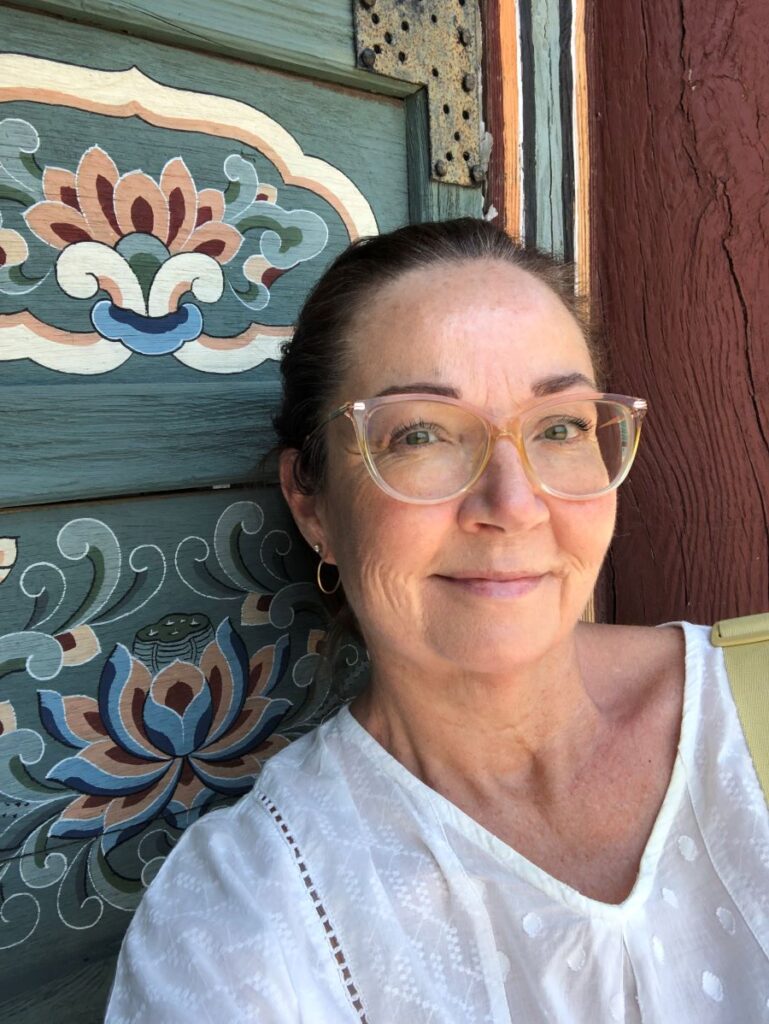

The Beomeosa Temple is definitely worth the effort to see. A metro and a bus, plus quite a bit of walking staircases and uphill, but you will not be disappointed. This is a marvellous complex, full of history, beauty, art and tranquility. I am so glad I visited this important temple in Busan.
